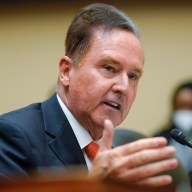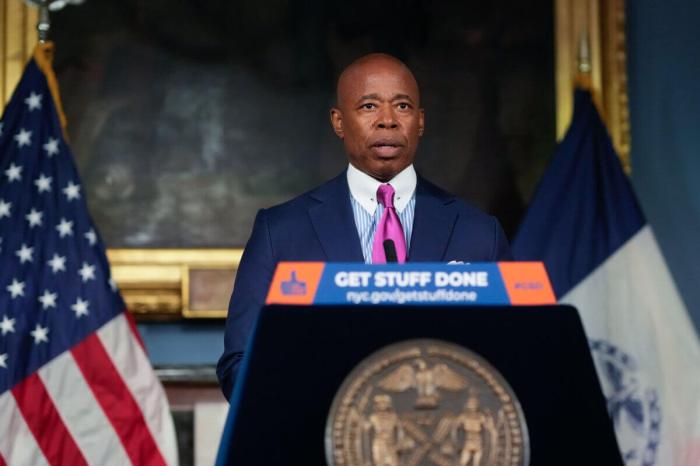(The opinions expressed here are those of the author, a columnist for Reuters.)
CHICAGO (Reuters) – When an actuary is featured in a presidential campaign ad, you know something weird is happening in politics. Along with the unprecedented, norm-breaking campaign this year, retirement policy is front and center.
Social Security and Medicare enjoy universal popularity across all partisan and demographic lines, surveys show. The programs rarely surface as major presidential campaign issues, but this year, President Donald Trump put Social Security in play. In August, he signed a presidential memorandum calling for the deferral of Federal Insurance Contributions Act (FICA) revenue through year-end as a pandemic relief measure – and he also said he would push for termination of the tax https://reut.rs/3kSYzRI if he wins a second term.
If Republican Trump gets his way, and if FICA is not replaced with something else, the program would run out of money very quickly – and that is where the actuary enters the picture. The campaign of Democratic candidate Joe Biden has been running a series of television ads https://bit.ly/3kTj2WM quoting an actuarial opinion letter on Trump’s proposal from Stephen C. Goss, Social Security’s nonpartisan chief actuary. The letter contains the bombshell forecast that in this “what if?” scenario, Social Security’s Disability Insurance trust fund would be drained next year, and the Old Age and Survivors trust fund would be emptied in 2023.
And that is just one of the retirement issues on the ballot this year.
SOCIAL SECURITY
Even before the FICA clash, Social Security was facing a long-term solvency problem that is now forecast to accelerate due to the collapse of the economy. Before the pandemic, the Social Security trustees predicted that the program’s combined retirement and disability trust funds would be emptied in 2035 due to long-term shifts in the ratio of workers to beneficiaries. At that point, current revenue would be sufficient to pay only 80% of benefits. The pandemic likely will move that date up by a year or more, according to forecasts from Goss.
Voters should consider which party would provide the solution they prefer. Restoring solvency will require choices between higher revenue, reduced benefits or some mix of the two. Most Democrats in Congress support modest expansion of benefits as part of a broader fix to Social Security’s solvency. Biden’s Social Security plan https://bit.ly/2RMNWU4 calls for restoring long-range solvency by lifting the cap on wages subject to FICA taxes; he also favors some targeted expansion for low-income and very old beneficiaries.
The Trump campaign has no specific Social Security proposal, and the Republican Party declined to put forth a policy platform document this year.
But the party’s history on reform proposals has been clear. Most include calls for a gradual increase in the full retirement age – the age when you can qualify to receive your full benefit. Retirement ages already are rising gradually to 67 from 65 under changes enacted in 1983; some Republican proposals have called for gradually raising the FRA to 69 or 70. Their argument: with rising longevity, everyone should wait longer for benefits.
This would spell big trouble for low-income workers, and workers of color, who tend to earn less, have lower life expectancy and tend to work in physically demanding occupations that become more difficult to continue at older ages. But it also would hurt the millions of older workers who now find themselves prematurely retired due to the pandemic, who may need to file for Social Security at younger ages; a higher retirement age would mean sharp reductions in benefits for them.
AFFORDABLE CARE ACT
Republicans have been trying to topple the Affordable Care Act (ACA) since its passage in 2010, and the latest salvo is a lawsuit, brought by 20 Republican-leaning states, and supported by the Trump administration, now before the U.S. Supreme Court. The case centers around the constitutional viability of the ACA’s individual mandate.
The Supreme Court is scheduled to hear the case right after the Nov. 3 election and a decision is not likely until next year. If the court rules for the plaintiffs, the law would be invalidated and millions of Americans would lose health insurance.
The ACA has boosted coverage among older, pre-Medicare Americans, and the guarantee of coverage for people with pre-existing conditions has been a game-changer.
The death of Justice Ruth Bader Ginsburg this month has increased attention on the Supreme Court case, with some observers predicting that a further shift of the court to the right boosts the odds that the ACA could be overturned.
What happens then?
Republicans have been promising a superior replacement to the ACA for years, but most of their proposals focus on lowering premiums in exchange for reduced levels of insurance protections, such as pre existing conditions. Some Democrats start from the perspective that the ACA should be improved and expanded; others favor expanding Medicare.
Biden has called for adding a public option to the ACA and retaining the law’s Medicaid expansion. Medicare eligibility could be expanded by lowering the eligibility age, establishing Medicare for All or creating a Medicare buy-in. Biden favors reducing the Medicare enrollment age to 60 https://reut.rs/2Sa8bLC.
MEDICARE TRUST FUND
If all that were not enough, the Hospital Insurance (HI) trust fund, which accounts for spending under Medicare Part A, needs nearly immediate action to address looming insolvency. The HI fund is on track to be exhausted in 2024, according to the Congressional Budget Office https://bit.ly/3iT43eJ. That is two years quicker than the last estimate of trust fund exhaustion in 2026, made by Medicare’s trustees before the pandemic.
The HI trust fund is financed mainly by a 2.9% FICA tax split between employees and employers. Falling receipts due to the economic downturn have hurt the outlook, as have several recent changes in federal law.
(Reporting by Mark Miller in Chicago; Editing by Lauren Young and Matthew Lewis)




















